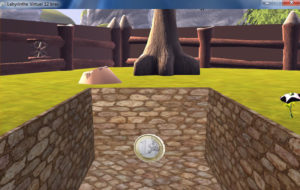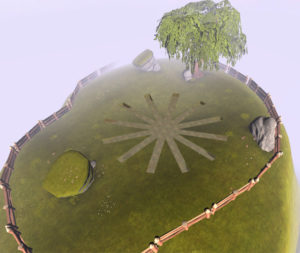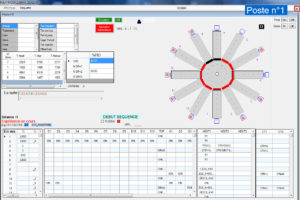Virtual radial maze for Humans
Description
The subject navigates in a 3D virtual 12-arms maze with the keyboard. The virtual world is composed of a circular central arena from which leave 12 arms. A door limits the access to the arms.
At the extremity of each arm, stairs lead to a small platform, which may contain a coin (reward).
Proximal and distal cues help the user to navigate in the maze.
The experimenter defines the experiment in details a priori, that is the succession of activations / deactivations of the doors and the appearance / disappearance of the rewards, set according to the behavior of the subject in the maze.
Example of experiment
At the beginning of the experiment, all the doors leading to the arms are closed and the coins are displayed on the hidden platforms at the end of each arm. The subject needs to collect all the coins without visiting any arm twice, considering that after reaching the extremity of an arm, the subject is automatically placed in the center of the maze, in a random direction.
Analyses
A large amount of data are calculated during an experiment (purcentage of correct answers, latency time, journey time, total time, calculated trial per trial or arm per arm,…). Once the experiment finished, a software extracts the output variables according to a great number of parameters and filters, which are defined by the experimenter.


